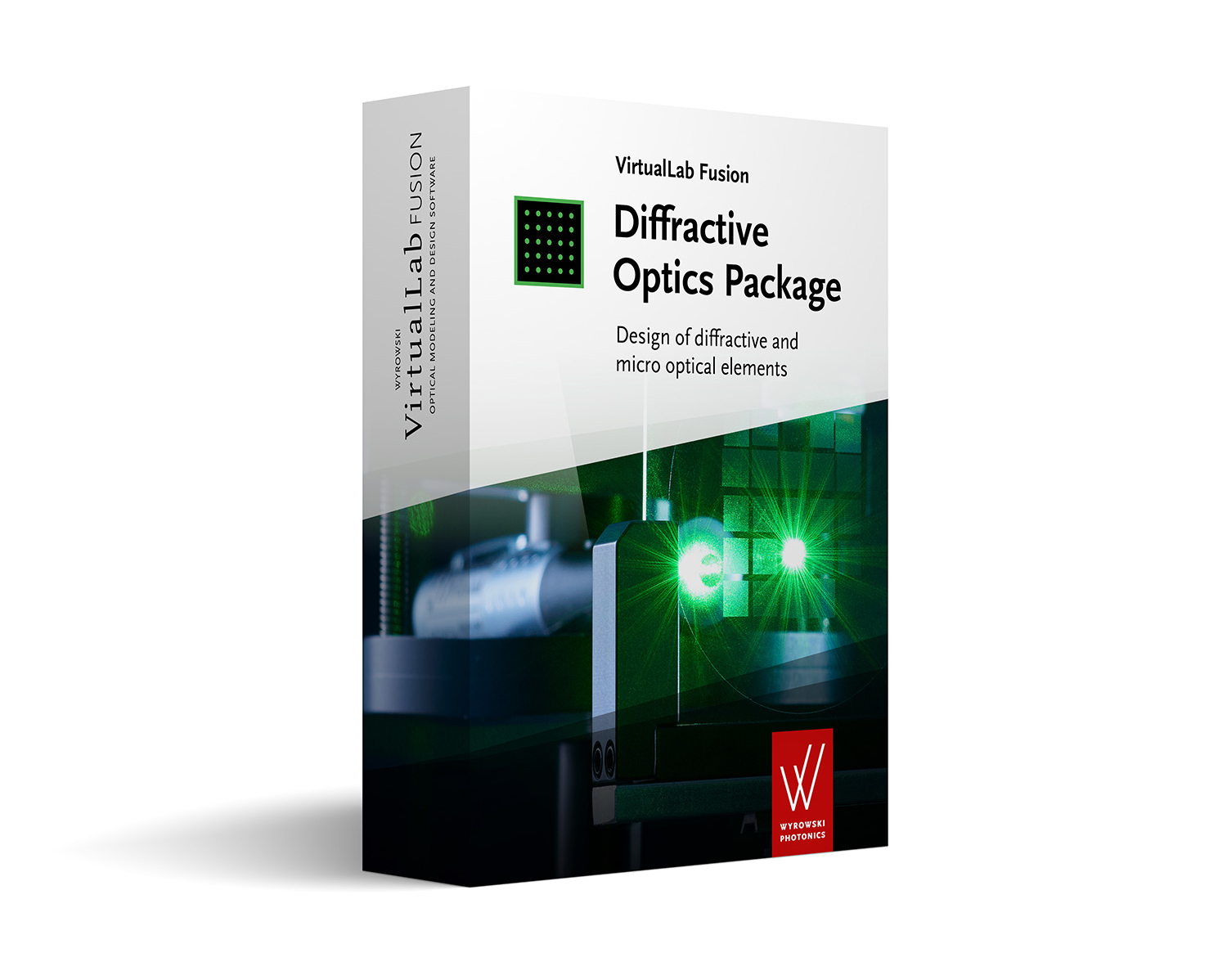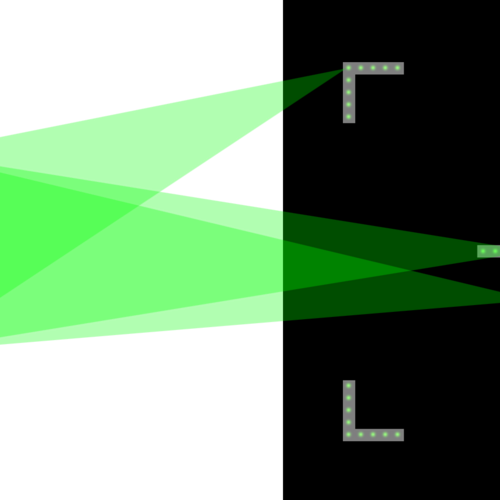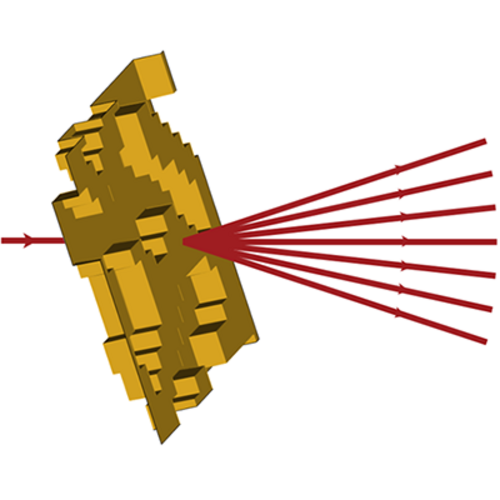
Diffractive Optics Package
Design of Diffractive and Micro Optical Elements
The Diffractive Optics Package extends VirtualLab Fusion with powerful tools for designing and simulating Diffractive Optical Elements (DOEs). It adds specialized session editors, interactive assistants that guide users through the simulation setup, along with the Iterative Fourier Transform Algorithm (IFTA), a key method for DOE design.
Key Features
- Iterative Fourier Transformation Algorithm (IFTA)
This approach enables the efficient and accurate design of DOEs for beam shaping, structured illumination, and other diffractive optics applications.
- Session Editor
The dedicated wizards for different types of diffractive optics simplify the design process and ensure a smooth workflow from defining specifications to obtaining an optimized DOE.
How the Diffractive Optics Package Extends VirtualLab Fusion
- The goal of DOE design is to create a diffractive element that generates a specific intensity distribution in the far field. However, a common limitation in many DOE designs is that only the phase of the incoming wave can be modified, not its amplitude.
- Other factors, such as restrictions on the phase range or specific geometric requirements, can also impact the design. In all cases, these conditions prevent an exact solution, meaning that the best possible approximation must be found.
- To achieve this, IFTA iteratively refines the DOE’s phase profile. It alternates between the spatial and Fourier domains, progressively adjusting the phase while ensuring that the generated intensity pattern gets as close as possible to the desired target.
This approach enables the efficient and accurate design of DOEs for beam shaping, structured illumination, and other diffractive optics applications.
The Diffractive Optics Package in VirtualLab Fusion makes applying the IFTA method easy and intuitive. It includes session editors, interactive assistants that guide users through the setup of their simulations. The dedicated wizards for different types of diffractive optics simplify the design process and ensure a smooth workflow from defining specifications to obtaining an optimized DOE.



